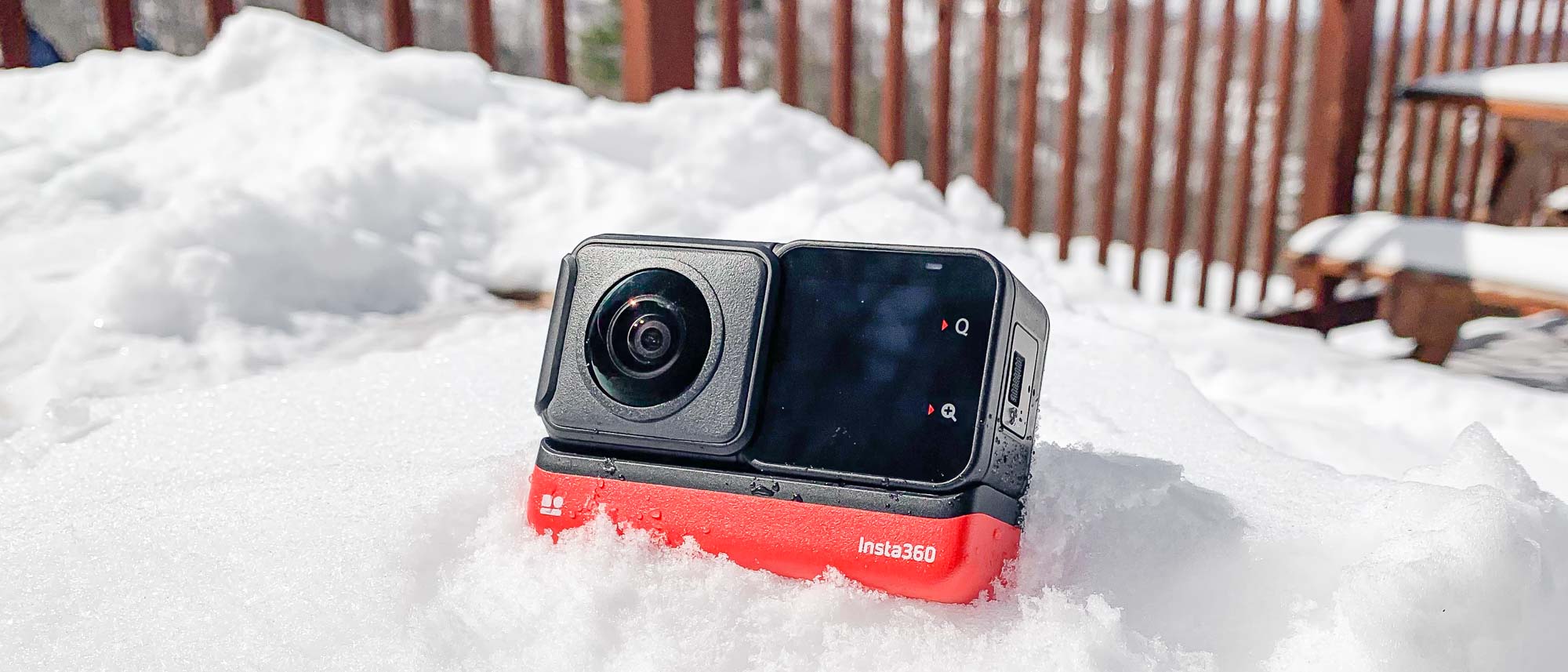Tom's Guide Verdict
Get the Insta360 One RS if you want an action camera and 360 camera in one.
Pros
- +
Lets you easily switch camera types
- +
Excellent video editing app
- +
Good battery life
Cons
- -
Bulky
- -
Video quality not quite as good as GoPro Hero10
Why you can trust Tom's Guide
Size: 2.8 x 1.9 x 1.3 inches (4K lens)
Weight: 4.4 ounces (4K lens); 4.8 ounces (360 lens)
Battery life: 75 minutes (4K/60 fps); 82 minutes (5.7K@30fps)
Max video resolution (360 lens): 5.3K @ 30 fps
Max video resolution (4K lens): 4K @60 fps
Max photo resolution (360 lens): 6080x3040 (2:1)
Max photo resolution (4K lens):8000x6000 (4:3)
Water resistance: 16 feet
Woe to the company that tries to unseat GoPro from its perch as the best action camera. Many have tried and failed to replicate GoPro’s design and features, only to come up short.
The Insta360 One RS offers a novel take on the action camera, and one that differentiates it enough from the GoPro. By letting you change out its camera on the fly — so it can transform from a traditional action camera to a 360 camera — it gives you something that GoPro doesn’t. Read the rest of our Insta360 One RS review to see if this is the best action camera — and best 360 camera — for you.
Insta360 One RS review: Price and availability
Insta360 is selling the One RS, which went on sale March 22, 2022, in several configurations. The Twin Edition includes the 4K Boost Lens and 360 Lens for $549.99. The 4K Edition (which has just the 4K Boost Lens) retails for $299.99, while the 1-Inch Edition (which includes the older 1-inch camera module) retails for $549.99. Extra battery bases cost $29.99.
Insta360 One RS review: Design
The Insta360 One RS is very similar in design to its predecessor, the Insta360 One R, and basically lets you have two cameras in one. The camera separates into three pieces: the camera module, which contains the lens (or lenses), the control module, which has a small color touchscreen, and the battery.
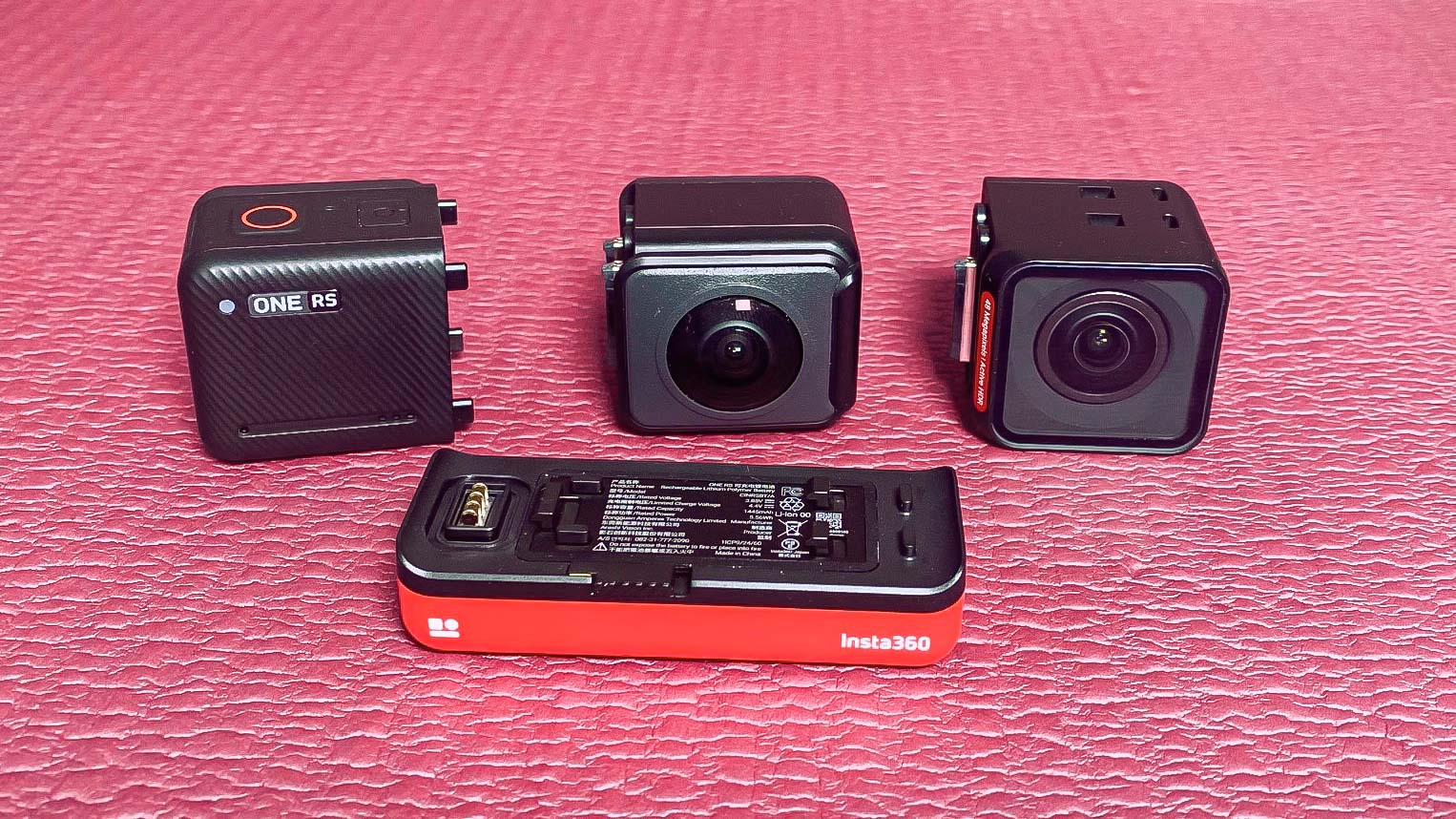
The idea behind the Insta360 One RS is that you don’t have to carry around an action camera and a 360 camera separately; you can simply swap out the camera module on the One RS. It’s a novel idea, and one that has been copied, to some degree, by DJI with its Action 2 action camera.
Like the original, the One RS can be used with three different lens modules: a 360-degree lens module, a 5.3K 1-inch Wide Angle lens module, and a 4K Boost Lens, which has a 1/2-inch, 48MP sensor. The latter two lenses can be reversed, so that you can use the camera’s display to frame your shots in selfie mode.
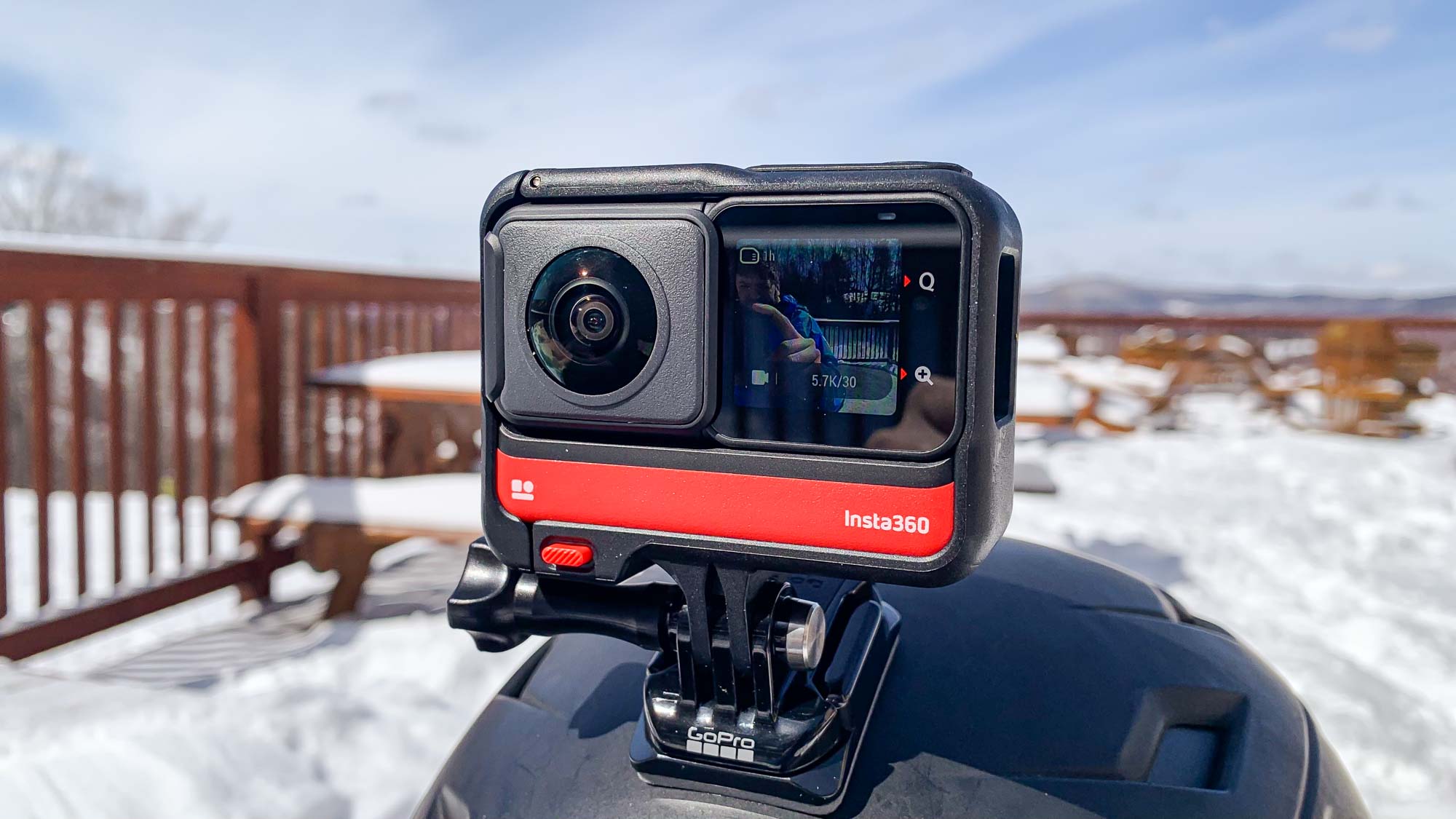
The modular design of the One RS is definitely clever, but it does make the camera bulky. Fully assembled, it’s larger than even the GoPro Hero10 — and gets even bigger when you slot it into its mount. While I didn’t notice its weight too much when on my ski helmet, I did smack it into the lift bar more than once.
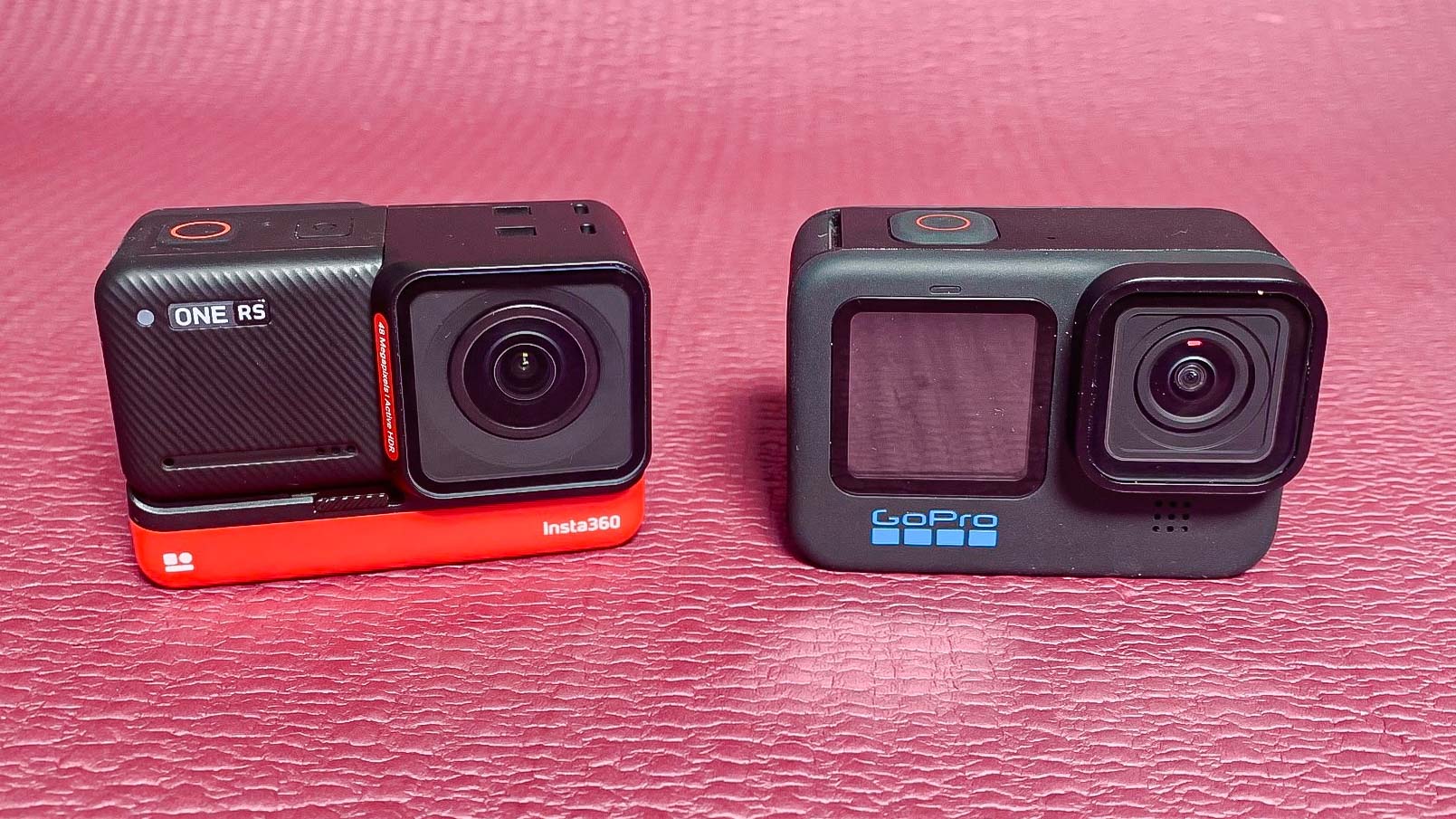
The biggest noticeable change to the One RS is its mounting case, which is now much easier to use. Instead of unlatching from the top, it now opens from the side, and has a much simpler mechanism. The case also has a plastic shield on the front to help cut down on wind noise, but I didn’t find it to be as effective as I’d hoped.
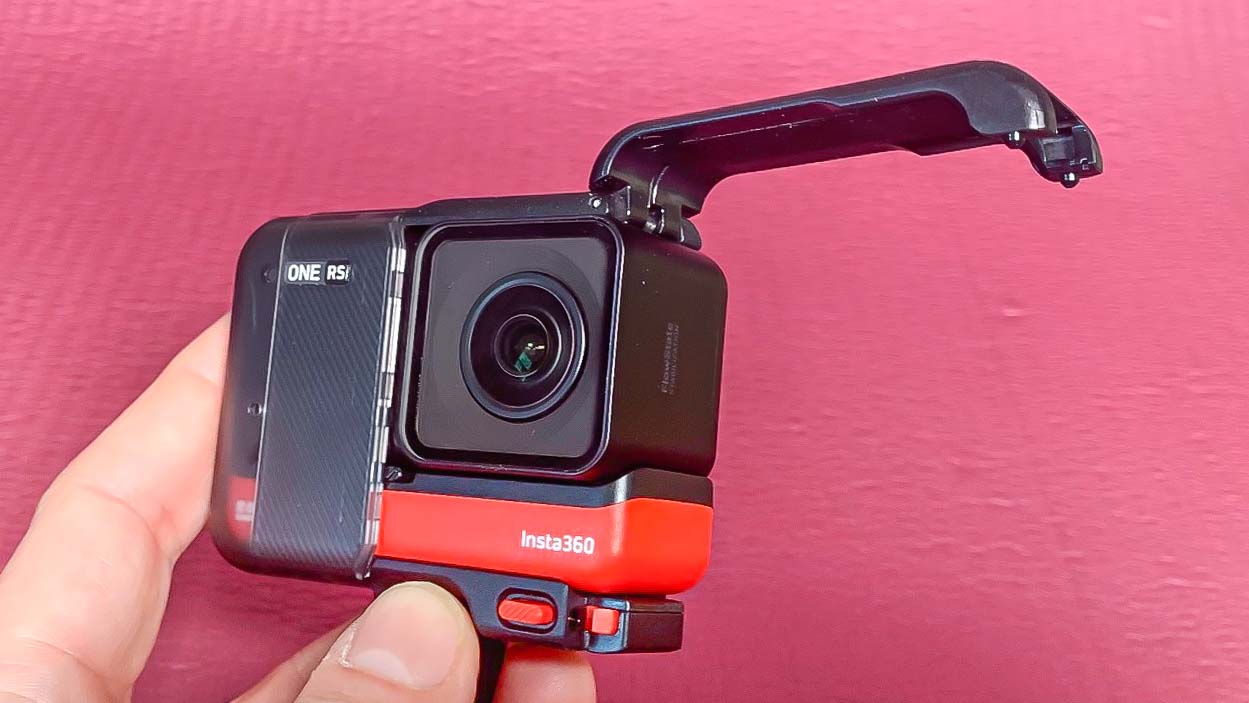
The One RS’ case uses the standard GoPro-compatible mounting system, so any of the best GoPro accessories you buy that have a universal mount should fit the One RS.
Insta360 One RS review: Performance
It was relatively easy to swap out the various components of the One RS. The latching system is the same as the One R, so that the modules simply snap together, and the battery clicks into place easily. It wasn’t as slick as the DJI Action 2, which uses strong magnets to hold its components together, but it was more secure.
Atop the One RS’ control module is a Power button and a Record button; owing to the camera’s size, these buttons are a bit smaller than the ones on the GoPro Hero10, and were a bit harder to locate and press by feel alone. While wearing ski gloves, it was more difficult for me to reach up over my helmet and press the buttons.
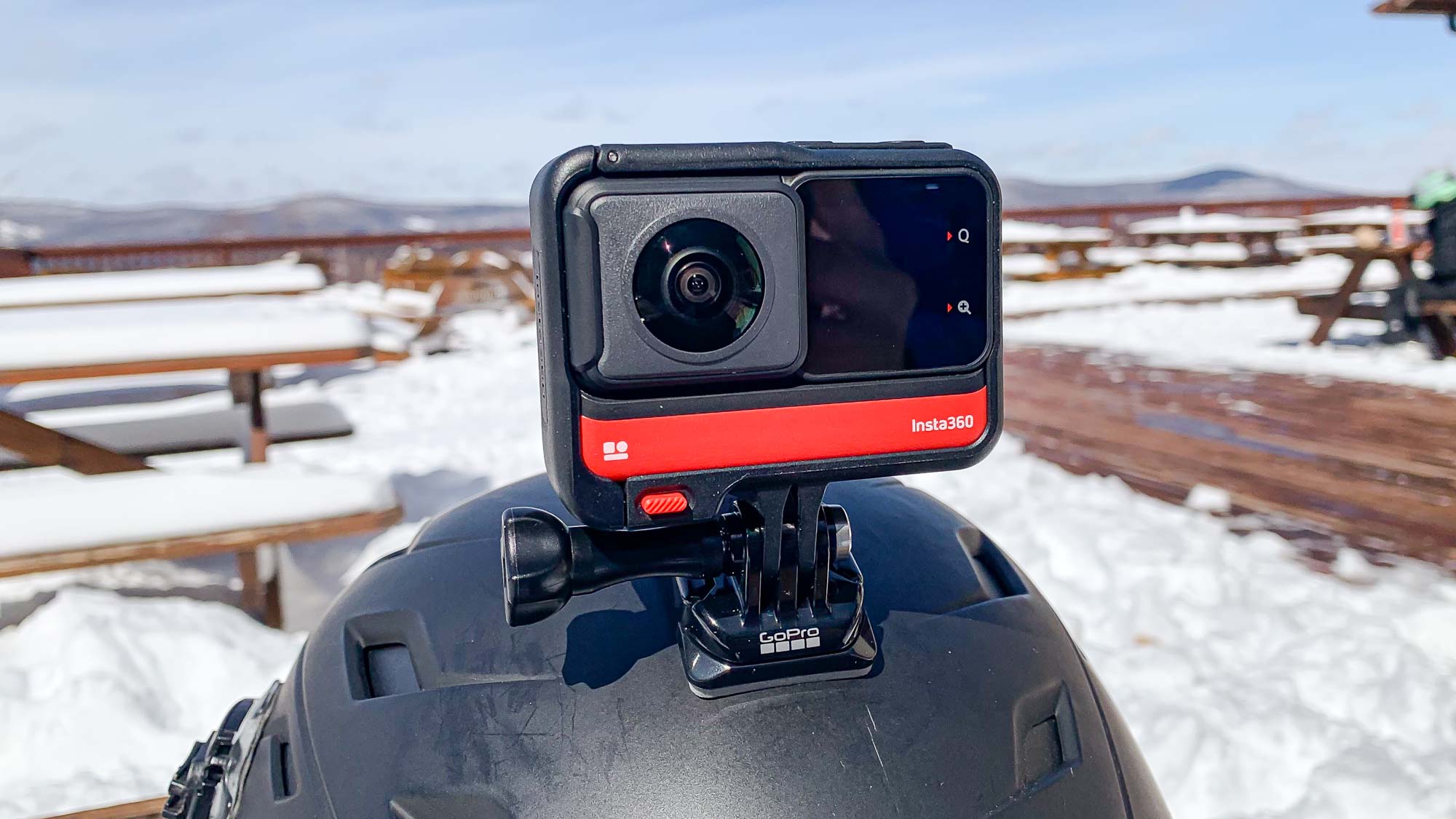
The side of the control module has a small latch that protects the camera’s USB-C port and microSD card slot. The door is held in place by a thin plastic tether, which feels like it could break after too much use.
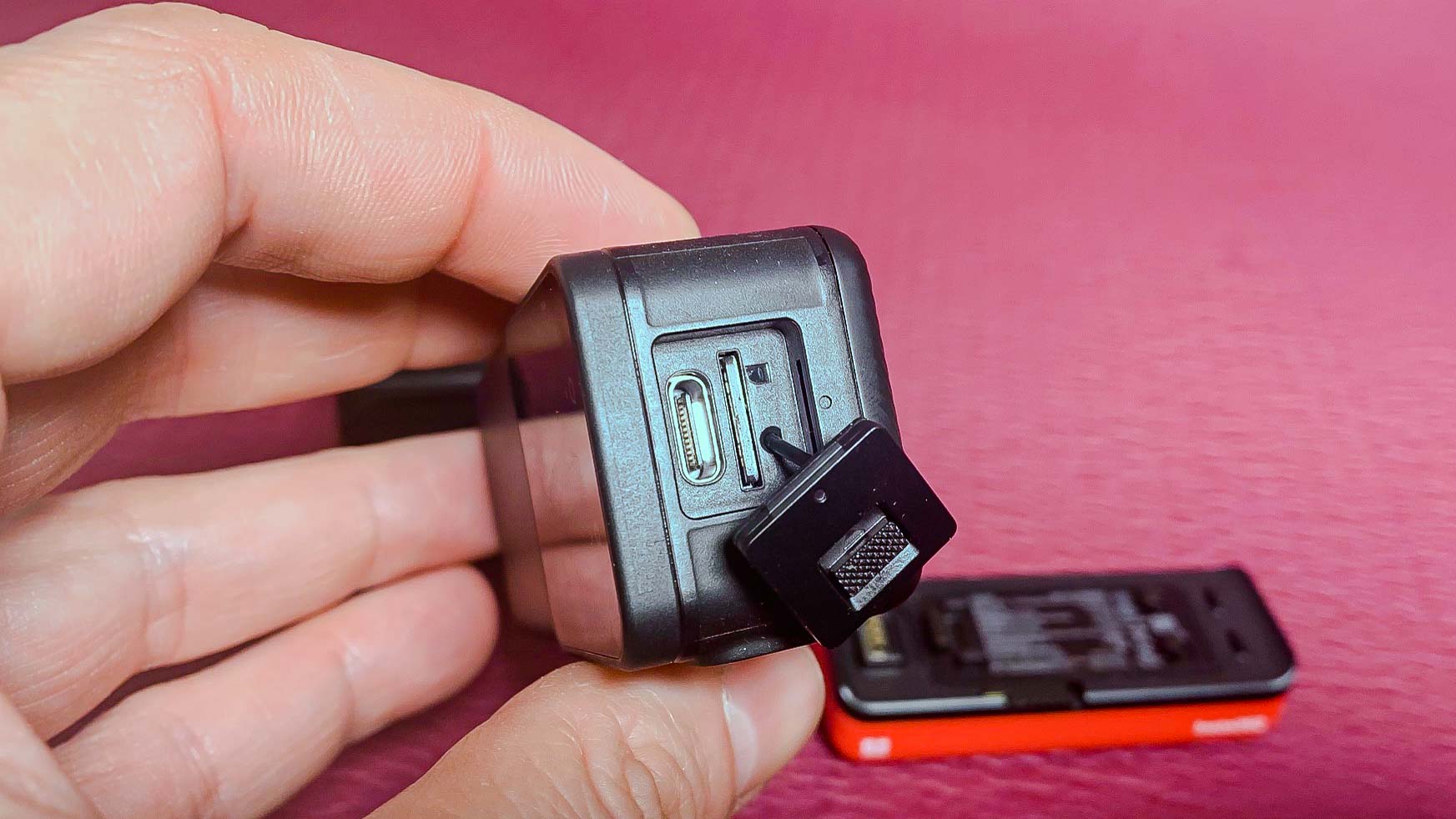
Like the original One R, the One RS’ screen is small — half the size of the GoPro’s display — which makes it trickier to select menu items. However, you can also use the Insta360 app to change settings, which — if the camera is mounted to your helmet — may be the easier option.
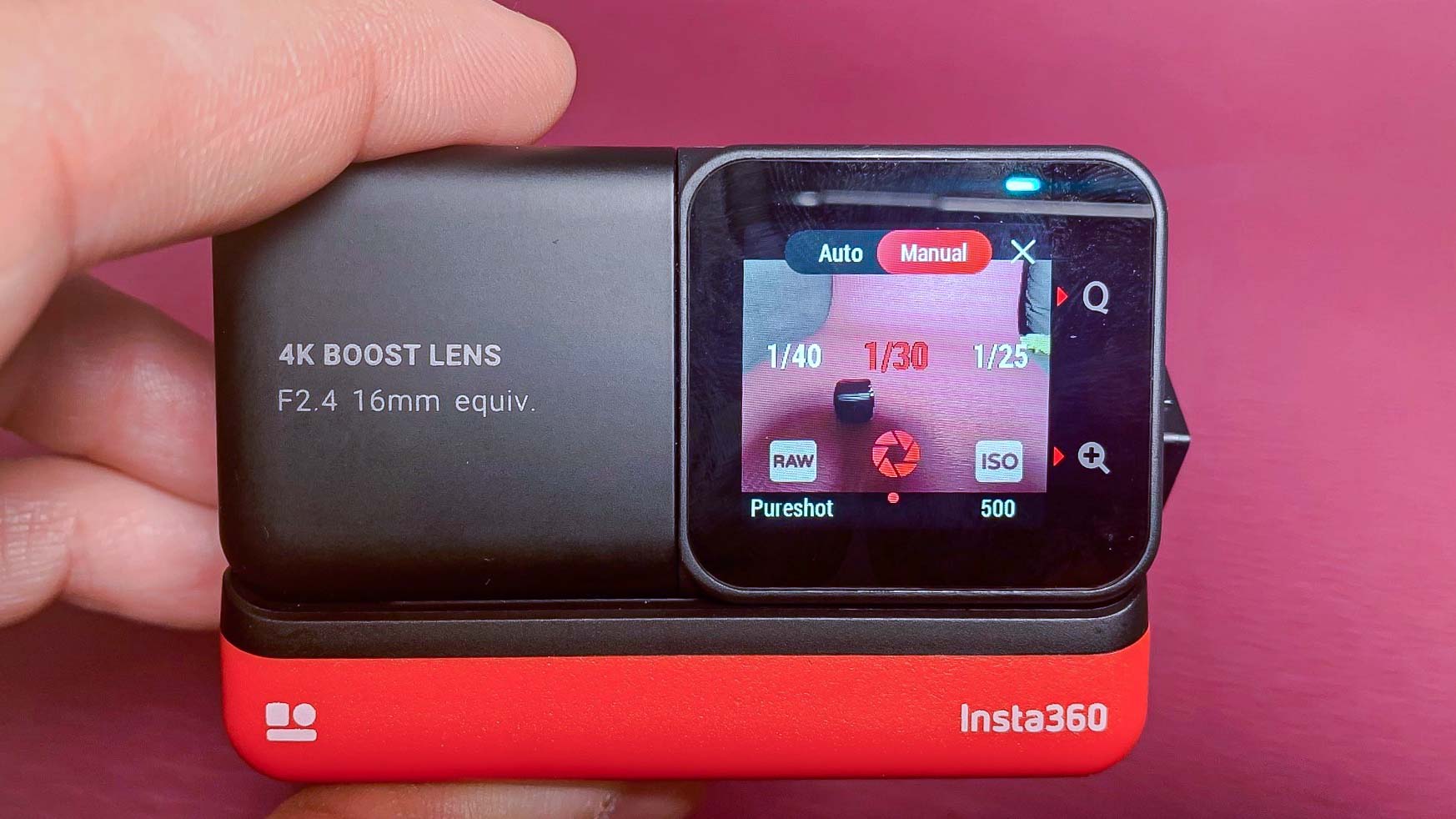
Insta360’s standard 4K camera maxes out at, not surprisingly, 4K. If you’re using Active HDR mode, the top frame rate is 30 fps. If you’re not using HDR, the frame rate can be increased to 60 fps. In slow-motion mode, it captures 1080p at 200 fps and 2.7K at 100 fps. The 360 lens records 5.7K video at 30 fps, and can record 3K resolution at 100 fps.
By comparison, the GoPro Hero10 Black can record 5.3K video at 60 fps, 4K at 120 fps, and 2.7K at 240 fps, so it has the Insta360 One RS beat in terms of frame rates.
I tested the One RS by taking it with me skiing. I used both the 4K wide angle lens and the 360 lens, and both produced videos that were bright, colorful, and sharp. I could make out the finest details in the snow, the surrounding trees, and the clouds in the sky.
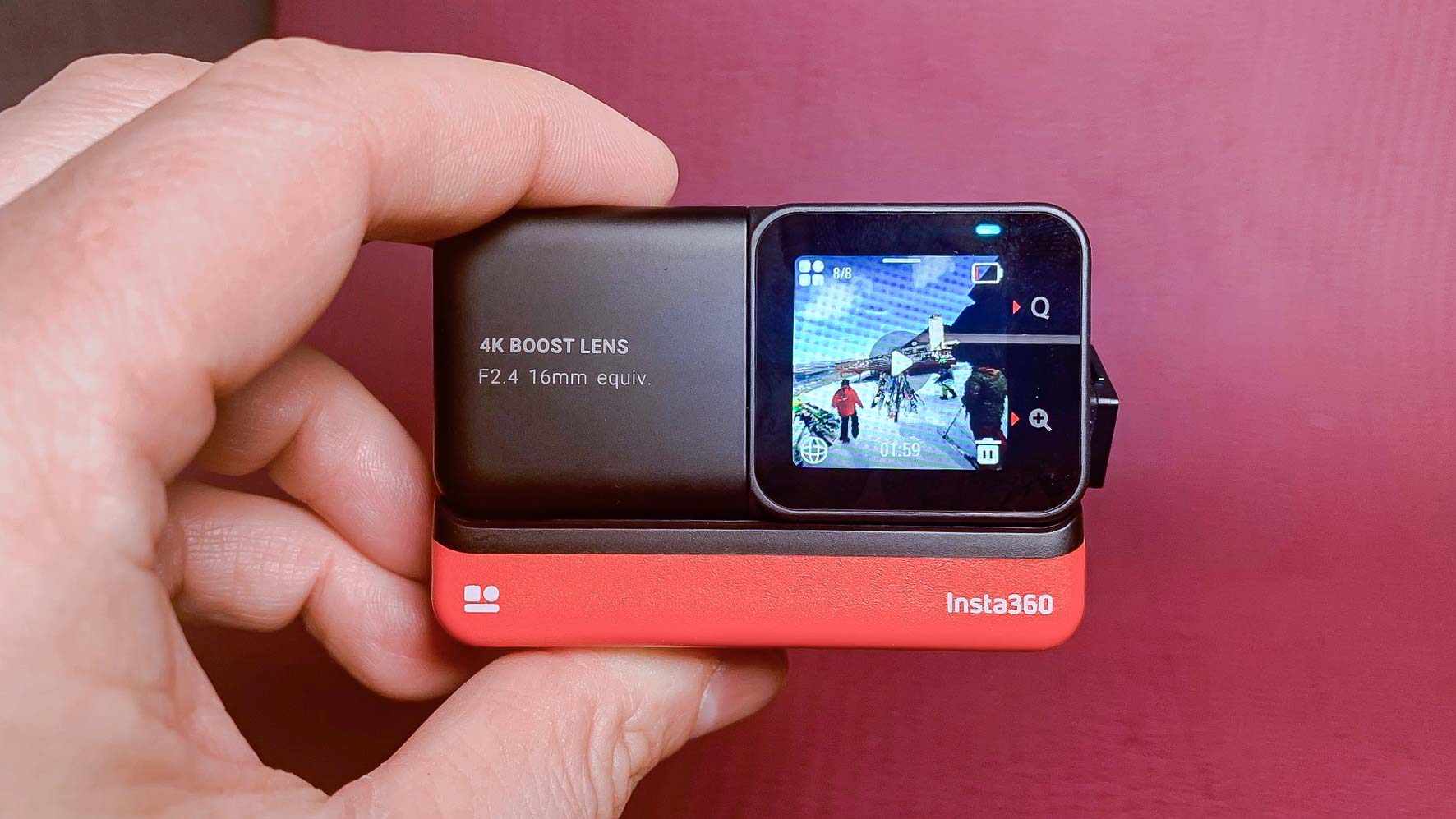
The camera’s motion stabilization feature, known as Flowstate, also did a tremendous job in keeping the action smooth as I zigged and zagged down the mountain. I didn’t have a GoPro on hand to do a direct side-by-side comparison, but based on my past experience, while the GoPro was most likely better — you can rock it back and forth up to 45 degrees — you won’t have any complaints with the Insta360.
The one minor issue I had, though, was that there was a good deal of wind noise when schussing down the slopes.
Insta360 One RS review: App
A lot of the magic of Insta360’s cameras lies not in the hardware, but in the company’s smartphone app, which lets you edit your footage in a number of very creative ways.
For all videos, you can adjust what it looks like by tweaking the color, contrast, and filters. Going a step beyond, you can add music (the app offers a range of tracks). Other editing tools include the ability to slow down or speed up specific sections of your video and Snapshot, which lets you take a picture of a particular moment.
If you use the camera’s 360 lens, your editing options increase. For starters, you can add keyframes throughout your video, so that the center of the action can shift, whether it’s in front or behind the camera.
Subject tracking allows you to keep individuals in the center of the frame, no matter how you’re moving. It was pretty accurate in my testing, and definitely keeps you from worrying about what you’re aiming at.
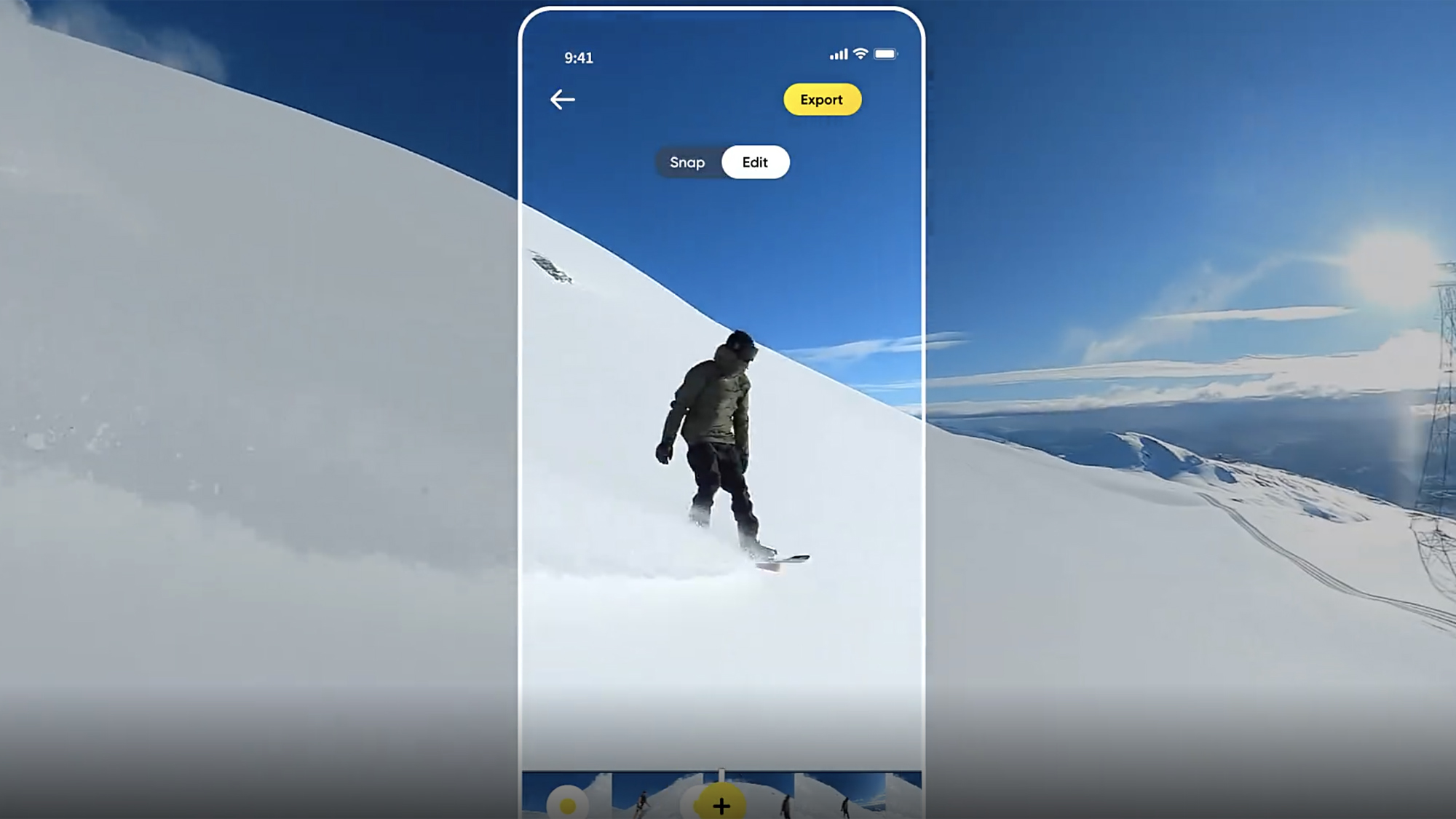
Freeze Frame is pretty clever; you can select a point in time, have the video freeze for 5 or 10 seconds as the viewpoint changes, and then have the video resume. I didn’t do anything as dramatic as going over a jump, but I can see where the feature would be useful for showing your audience a particularly neat trick.
There’s a bit of a learning curve to using all the editing tools, but you can preview all of your changes before committing to them.
Insta360 One RS review: Battery life
Insta360 says that the One RS should last up to 65 minutes when recording video at 5.3K at 30fps. That’s comparable to the GoPro Hero10, which can record 5.3K/60 fps video for up to 56 minutes.
As mentioned earlier, extra batteries for the Insta360 One R cost $29.99 each. GoPro offers a standard rechargeable battery for $19.99, and an Enduro rechargeable battery for $24.99.
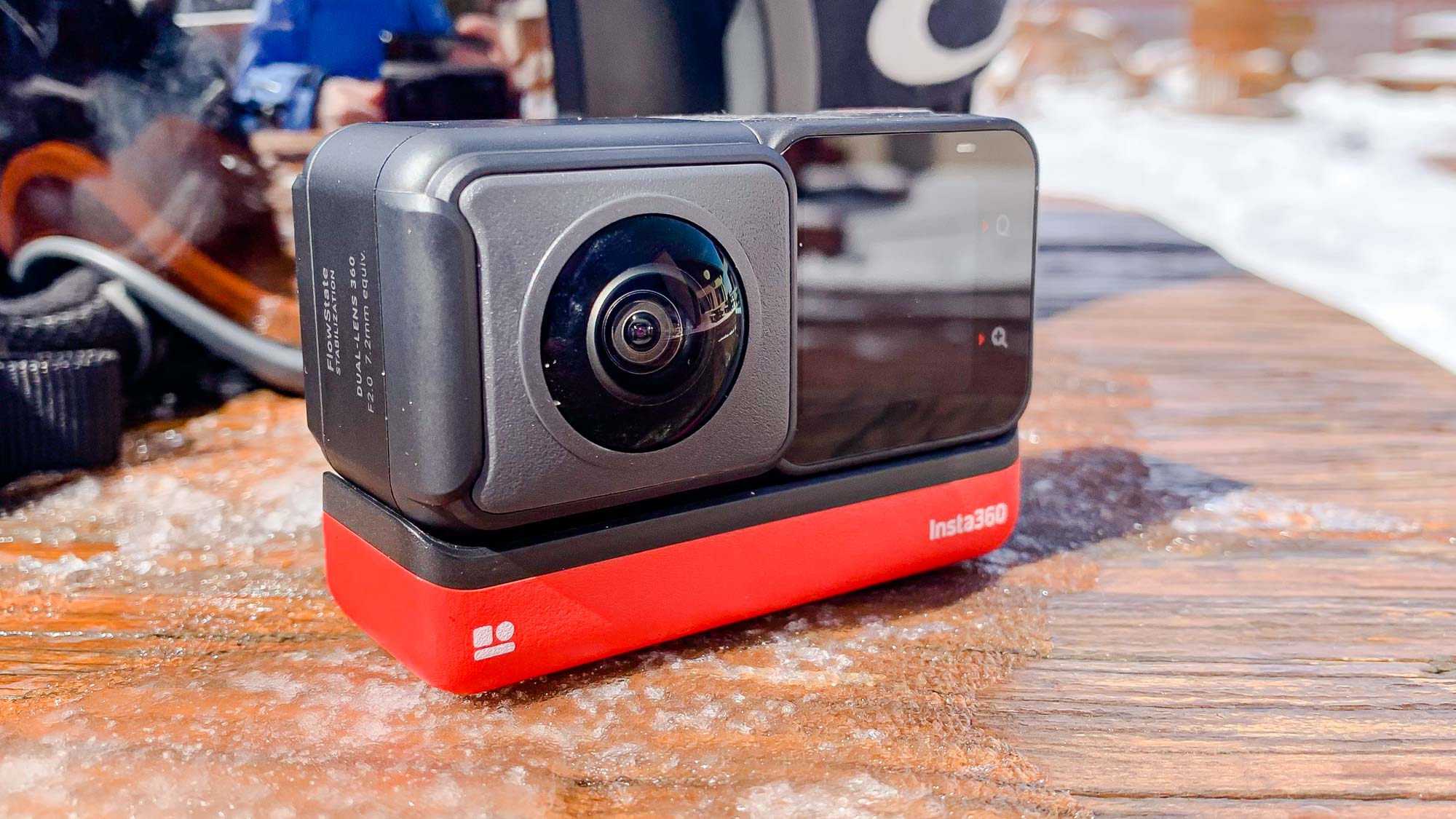
One thing to note — if you’re editing video on your smartphone directly from the One RS, it will chew into your battery life pretty quickly, so I’d advise either downloading clips to your smartphone, or offloading them to your computer and editing them there via Insta360’s desktop app.
Insta360 One RS review: Bottom line
When it comes to the best action cams, I still think the GoPro Hero10 is the best around. It has better video-recording capabilities, it’s slightly smaller, and because of its larger buttons and screen, it’s a little easier to use on the go. However, if you’re looking for the most versatile action camera, then the Insta360 One RS is the way to go. While you sacrifice a little in the name of video quality, you can have two cameras in one.
As of this writing, you can get the GoPro Hero10 with a 32GB microSDHC card and a one-year subscription ($50/year) — which includes Unlimited cloud backup and discounts on GoPro accessories — for $349. By comparison, the Insta360 One RS with the 4K Boost Lens and 360 Lens costs $549.99. You can get the One RS with just the 4K lens for $299, but if you want just an action camera, then go with the GoPro.
Unless something unprecedented happens in the world of action cameras, it’s hard to see any company topping GoPro’s annual innovations. In creating a different kind of action camera — one whose lenses you can swap out for a 360 camera — and pairing it with a robust app, Insta360 offers a compelling alternative.

Michael A. Prospero is the U.S. Editor-in-Chief for Tom’s Guide. He oversees all evergreen content and oversees the Homes, Smart Home, and Fitness/Wearables categories for the site. In his spare time, he also tests out the latest drones, electric scooters, and smart home gadgets, such as video doorbells. Before his tenure at Tom's Guide, he was the Reviews Editor for Laptop Magazine, a reporter at Fast Company, the Times of Trenton, and, many eons back, an intern at George magazine. He received his undergraduate degree from Boston College, where he worked on the campus newspaper The Heights, and then attended the Columbia University school of Journalism. When he’s not testing out the latest running watch, electric scooter, or skiing or training for a marathon, he’s probably using the latest sous vide machine, smoker, or pizza oven, to the delight — or chagrin — of his family.
-
Chrisgull The 4K Boost lens supports 6K30 widescreen mode.Reply
Battery life with the 4K Boost lens is about 80 minutes.
Some people who have compared (I have not) say the Insta360 apps are better designed than Gopro.
